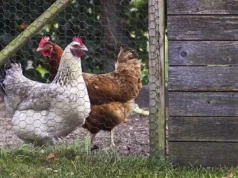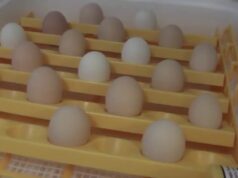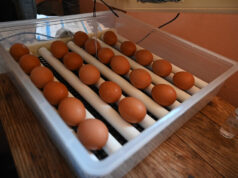In the world of poultry and chicken raising, creating a safe and warm environment for baby chicks is essential. A cardboard chick brooder offers an affordable and effective solution for providing chicks with the warmth and safety they require in their early life stages. Within this comprehensive guide, chicken enthusiasts and beginners alike will discover how easy and beneficial it is to set up a cardboard chick brooder at home.

Understanding the Importance of a Chick Brooder
Brooding refers to the caring of young chicks until they grow feathers and are ready to live outside independently. The brooder plays a crucial role in mimicking the warmth provided by mother hen and facilitating proper development. It helps in controlling the temperature, providing security, and ensuring proper nutrition for chick growth. For individuals seeking an economical brooding option, a cardboard brooder is a practical choice.
Benefits of a Cardboard Chick Brooder
A cardboard chick brooder has numerous advantages. It is cost-effective, environmentally friendly, and easily customizable. These brooders can also be set up in different sizes according to the number of chicks you are raising.
Moreover, cardboard is a natural insulator, helping maintain temperature inside the brooder. Additionally, when its time to dispose of the brooder, it can be recycled or composted without harming the environment.
Cost-Effectiveness
For those who are new to raising chickens or operate on a limited budget, a cardboard chick brooder is the perfect option. Compared to other materials, cardboard is widely available and inexpensive, making it an attractive choice for hobbyists and small-scale farmers alike.
Environmentally Friendly
Cardboard brooders are made from recyclable materials, which means they leave a small environmental footprint. When your chicks no longer need the brooder, you can simply recycle or compost it, aligning your poultry-keeping practices with sustainable living.
Setting Up Your Cardboard Chick Brooder
Before making the brooder, it’s crucial to have a checklist for chick brooder. For constructing a cardboard chick brooder, follow these steps:
Gather Your Supplies
You’ll need a sturdy, large cardboard box, bedding such as straw or pine shavings, a heat lamp or heating pad, a thermometer, feeding trays, and water containers. The box should be large enough for chicks to move freely but small enough to maintain the temperature easily.
Building the Brooder
Once you have your materials ready, cut the cardboard to form a box shape with a high edge. The tall sides prevent the chicks from escaping while allowing enough space for air circulation. Place the brooder in an area with minimal drafts and an ambient temperature suitable for chicks.
Next, install the heat source securely inside the brooder. Ensure that the temperature is consistent, around 95F for newly hatched chicks, gradually decreasing 5F each week as they develop feathers. Use a thermometer to monitor and adjust the heat source as needed.
Maintaining a Safe Environment
A cardboard chick brooder requires regular maintenance to ensure chick health. Frequently change the bedding to keep it dry and clean, as wet bedding can lead to illness. To learn more about maintaining a chick brooder, visit how to set up a chick brooder.
Position food and water containers in an area where they’ll be accessible without getting spilled. Chick starter feed should be provided in a shallow tray for easy access. Refill water dishes daily to ensure constant hydration.
Monitoring Growth and Development
Keep a watch on your chicks’ growth to ensure they are developing properly. Healthy chicks should be active, have clear eyes, and steady breathing.
Observing Behavior
It’s crucial to notice any behavioral changes. Chicks huddling together means they are cold and need more heat, while spreading out excessively might indicate that they are too hot. Adjust the heat source accordingly to maintain a comfortable environment.
Keeping Chicks Healthy
Providing a sanitary environment is vital for chick health. Ensure that their space is free from clutter and mess, reducing the risk of disease. Learn more on chick brooder checklist.
Transitioning from the Brooder
Chicks typically spend the first 4-6 weeks in the brooder until they have their feathers and can withstand the outdoor climate. Gradually introduce them to the outdoors, allowing them to acclimate to weather conditions.
Moving to a New Environment
Prepare a secure outdoor area for the transition. A more spacious chicken coop with a safe enclosure is ideal.
Common Challenges
Despite its simplicity, using a cardboard chick brooder comes with challenges like maintaining consistent heat and ensuring the cardboard remains dry.
Heat Regulation
Careful monitoring and adjustments are necessary to keep the temperature consistent. Use a reliable thermometer to avoid overheating or overcooling.
Preventing Dampness
To prevent moisture, which can compromise the brooder and the chicks’ health, maintain dry bedding and monitor weather conditions, particularly in damp climates.
Conclusion
Utilizing a cardboard chick brooder is an efficient, cost-effective way to raise healthy chicks. By following these guidelines, chicken enthusiasts can enjoy the rewarding experience of raising baby chicks from their earliest days to their transition into robust adult birds.

FAQ
What size should a cardboard chick brooder be?
The brooder should be large enough for chicks to move freely but small enough to control the temperature efficiently. A good starting point is around 2 square feet per chick.
How often should I check the brooder?
Check the brooder multiple times a day to ensure the chicks are comfortable and healthy. Regular attention helps maintain the right temperature and prevents issues.
Can cardboard brooders be used more than once?
While primarily designed for single-use, cardboard brooders can be reused if kept in excellent condition and thoroughly cleaned. However, ensure it’s structurally sound before reintroducing new chicks.
For comprehensive information on caring for chicks, refer to Purina Mills.
This article contains affiliate links. We may earn a commission at no extra cost to you.











